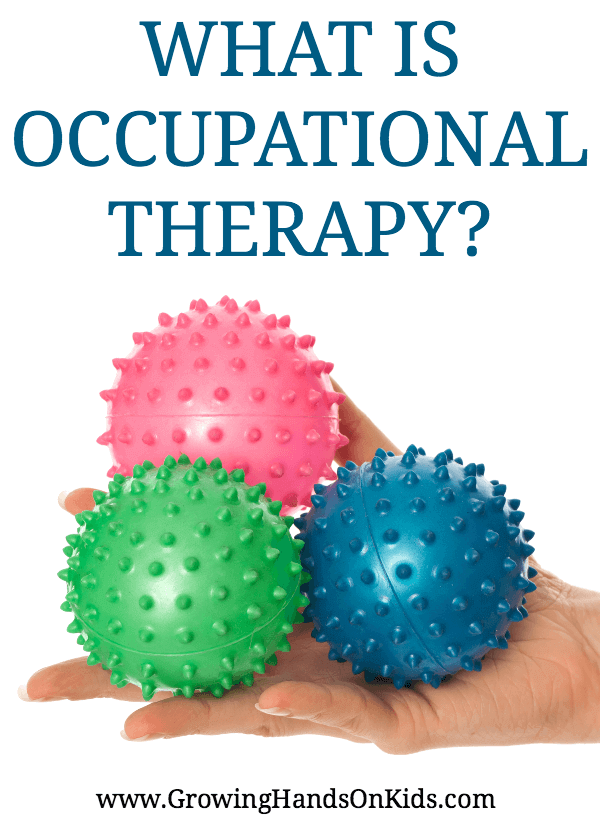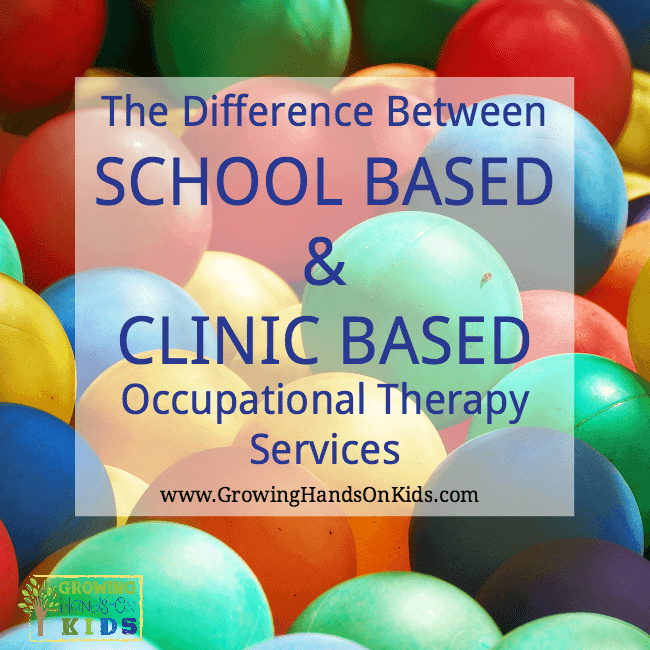What is Occupational Therapy?
Affiliate and Referral links are used below to promote products I love and recommend. I receive a commission on any purchases made through these links. Please see my disclosure policy for more details. As an Amazon Associate, I earn from qualifying purchases.
April is Occupational Therapy Month, so in honor of that, I thought I would do a series on what Occupational Therapy is and highlight some of the areas of practice that OTs work in.

What is Occupational Therapy?
Before we get into what Occupational Therapists (OTR/L) and Occupational Therapy Assistants (COTA) do in different fields, what is Occupational Therapy?
The American Occupational Therapy Association describes OT as follows:
In its simplest terms, occupational therapists and occupational therapy assistants help people across the lifespan participate in the things they want and need to do through the therapeutic use of everyday activities (occupations). Common occupational therapy interventions include helping children with disabilities to participate fully in school and social situations, helping people recovering from injury to regain skills, and providing supports for older adults experiencing physical and cognitive changes.
A term you will hear a lot with OT is Activities of Daily Living or ADLs. This term refers to any task or skill that a person needs to complete as part of their daily routine. Things such as bathing, toileting, cooking, cleaning, driving, and hobbies are things that Occupational Therapy professionals help their clients to either relearn or increase their strength in order to complete these skills again.
Areas that you will see Occupational Therapy professionals in are:
- Hospitals (acute and inpatient rehab)
- Out-patient therapy centers (including hand therapy)
- Schools
- Early Intervention (birth to 3)
- Nursing rehabilitation centers
- Mental health hospitals and centers
- Hippo-therapy (Using horses to increase better body mechanics and balance).
Types of OT Degrees
There are two different types of Occupational Therapy degrees. A master's degree to become an Occupational Therapist (OTR) and an associate-level degree to become an Occupational Therapy Assistant (OTA).
Many OT programs have moved to a doctorate level instead of a master's degree, but you can find both options out there still.
You may also see OTRs who have a bachelor's degree. Bachelor's degree programs are not available anymore, however, as entry-level OTRs now need a master's degree.
A therapist with a master's degree/doctorate in the OTR completes evaluations, creates treatment plans, treatment of the client, discharge paperwork, and also supervision of the OTAs.
An OTA is able to collect data for evaluations, however, they cannot assess or make conclusions or recommendations based on the evaluation. OTA's also complete all treatments and documentation during sessions and must also be supervised by the OTR.
Do you have any questions about Occupational Therapy? Comment below and let me know!
You May Also Like:

Heather Greutman, COTA
Heather Greutman is a Certified Occupational Therapy Assistant with experience in school-based OT services for preschool through high school. She uses her background to share child development tips, tools, and strategies for parents, educators, and therapists. She is the author of many ebooks including The Basics of Fine Motor Skills, and Basics of Pre-Writing Skills, and co-author of Sensory Processing Explained: A Handbook for Parents and Educators.

